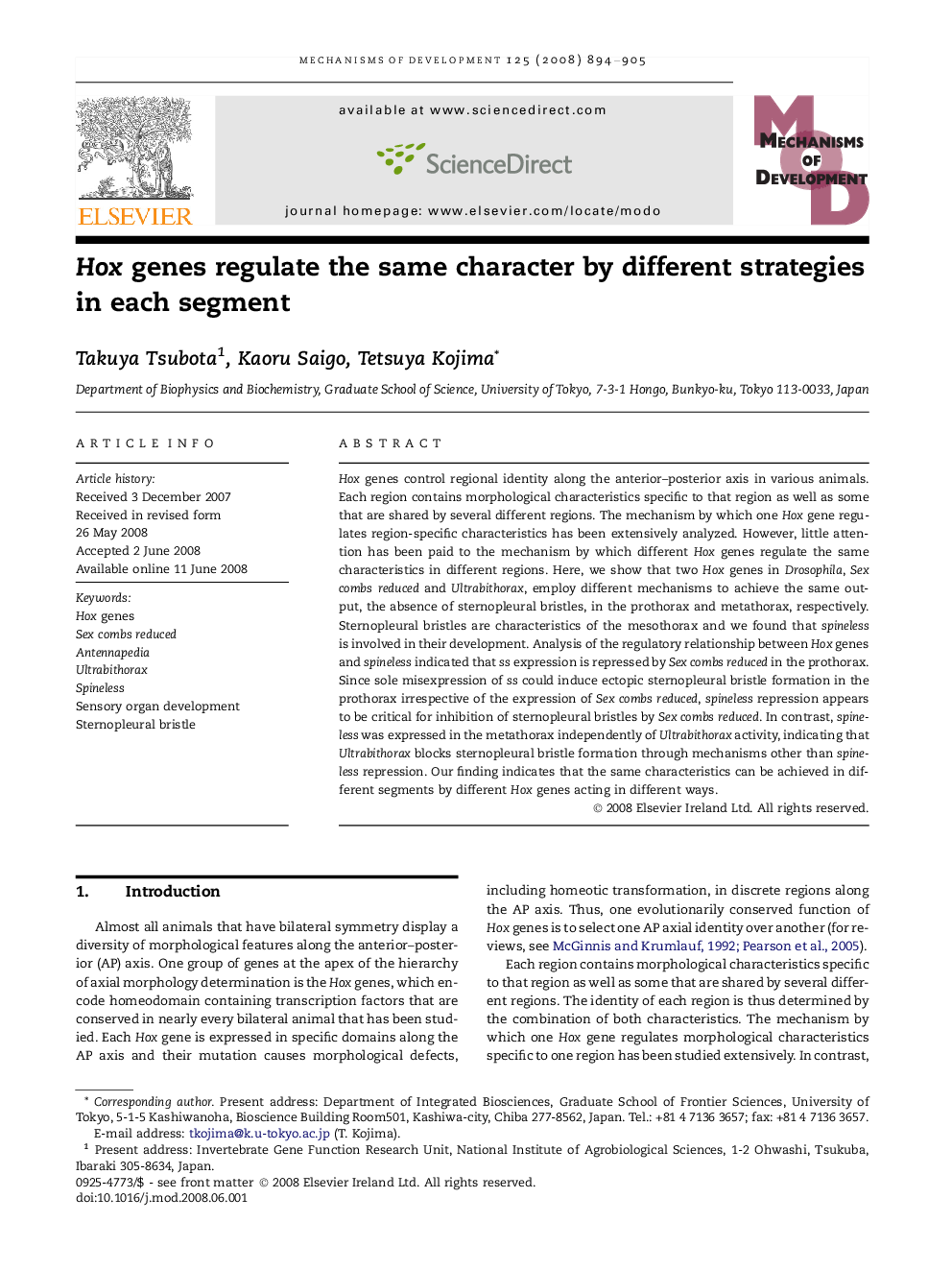| Article ID | Journal | Published Year | Pages | File Type |
|---|---|---|---|---|
| 2194764 | Mechanisms of Development | 2008 | 12 Pages |
Hox genes control regional identity along the anterior–posterior axis in various animals. Each region contains morphological characteristics specific to that region as well as some that are shared by several different regions. The mechanism by which one Hox gene regulates region-specific characteristics has been extensively analyzed. However, little attention has been paid to the mechanism by which different Hox genes regulate the same characteristics in different regions. Here, we show that two Hox genes in Drosophila, Sex combs reduced and Ultrabithorax, employ different mechanisms to achieve the same out-put, the absence of sternopleural bristles, in the prothorax and metathorax, respectively. Sternopleural bristles are characteristics of the mesothorax and we found that spineless is involved in their development. Analysis of the regulatory relationship between Hox genes and spineless indicated that ss expression is repressed by Sex combs reduced in the prothorax. Since sole misexpression of ss could induce ectopic sternopleural bristle formation in the prothorax irrespective of the expression of Sex combs reduced, spineless repression appears to be critical for inhibition of sternopleural bristles by Sex combs reduced. In contrast, spineless was expressed in the metathorax independently of Ultrabithorax activity, indicating that Ultrabithorax blocks sternopleural bristle formation through mechanisms other than spineless repression. Our finding indicates that the same characteristics can be achieved in different segments by different Hox genes acting in different ways.
